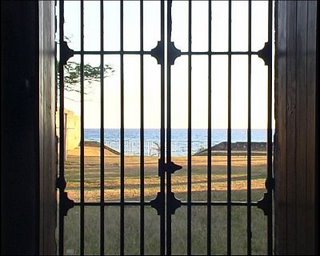Sentenced to New Caledonia
 Back in 1864, 248 murderers, rapists and thieves were sentenced to hard labour in New Caledonia. Their mission? To build a penal colony that would later house thousands of hard, petty and political criminals. Of the many criminals that landed on the island, only one escaped the 4-kilo chains, the handcuffs, the days literally levelling low-lying hills and building some of Nouméa's most important public buildings (e.g. its cathedral, hospital, military barracks). His name was Rochefort, a French journalist ousted from Paris by the Prussians for his political views. The rest of the prisoners, upon completion of their long sentences (to build Nouméa) were allowed to return to France (if they could afford the ticket). Those who could not afford to pay the return journey were forced to settle in New Caledonia and cultivate the land.
Back in 1864, 248 murderers, rapists and thieves were sentenced to hard labour in New Caledonia. Their mission? To build a penal colony that would later house thousands of hard, petty and political criminals. Of the many criminals that landed on the island, only one escaped the 4-kilo chains, the handcuffs, the days literally levelling low-lying hills and building some of Nouméa's most important public buildings (e.g. its cathedral, hospital, military barracks). His name was Rochefort, a French journalist ousted from Paris by the Prussians for his political views. The rest of the prisoners, upon completion of their long sentences (to build Nouméa) were allowed to return to France (if they could afford the ticket). Those who could not afford to pay the return journey were forced to settle in New Caledonia and cultivate the land.A subject of great taboo
75% of today's European population in New Caledonia (the Caldoches) are descendants of these prisoners. The penal colony was a subject never broached. It was almost completed razed in 1933 and was not opened or visited until 1994. A great divide had grown up between the descendants of the original prisoners and the 25% Europeans who had come to New Caledonia as free citizens. Inter-marriage was formally forbidden and many a bloody fight flew up in the face of the past. "My grandfather was not a straw-hat!" would come the calls of new generations defending their roots. (Straw hats was the term used for prisoners as this is what they wore to work under the heat of the sun.)
Today, one can visit what remains of the penal colony with the help of a guide. Asked who comes to visit the prison and museum, the answer is Japanese tourists or people who've come for a short stay (teachers, military, administrators). The Caledonians? Very few.


No comments:
Post a Comment